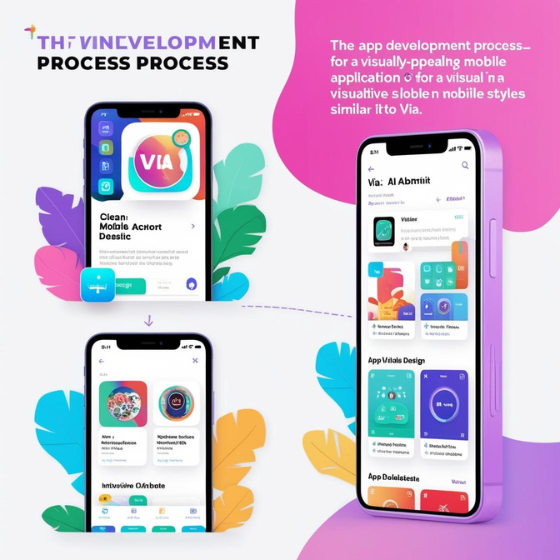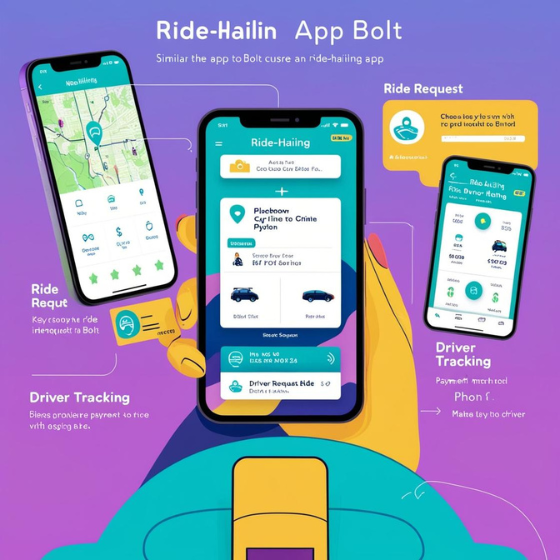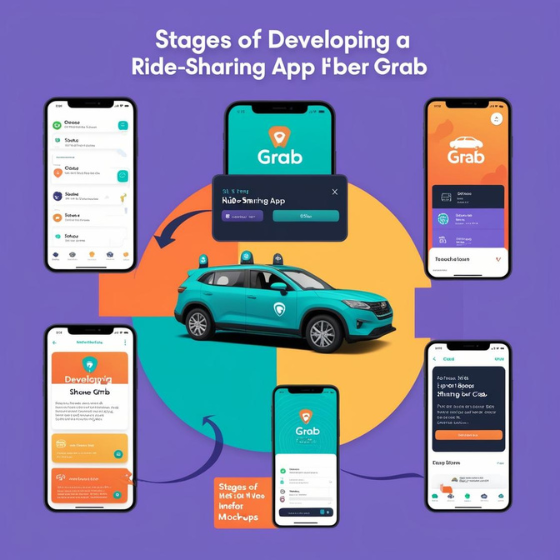How to Make an App Like Uber: A Comprehensive Guide
The global ride-hailing market is expected to reach over $300 billion by 2030. This staggering figure highlights the enormous potential for new businesses looking to venture into the world of ride-hailing apps. If you’ve ever wondered, how to make an app like Uber, you’re in the right place. Whether you’re an entrepreneur with a visionary idea or a startup looking to dive into the app development world, creating an app similar to Uber can be a lucrative business venture. In this blog, we will break down the key steps involved in developing a ride-hailing app like Uber and offer valuable insights into the process, from initial concept to launch. You’ll also learn about the technical aspects, costs, and challenges involved, and how Sodio can help turn your vision into reality.
Understanding the Core Features of an App Like Uber
Before diving into the technicalities of how to make an app like Uber, it’s important to understand the key features that drive its success. An Uber-like app is a complex system, which involves several essential components. Let’s explore these core features.
- User App – This is the interface that riders interact with. Key features include:
- Registration & Profile Creation: Users can sign up and create profiles with basic details.
- Ride Request & Scheduling: Allows users to request rides instantly or schedule them for a later time.
- Real-time GPS Tracking: Tracks the location of the user and the driver.
- Fare Calculator: Estimates ride fares before the trip begins.
- Payment Gateway Integration: Supports multiple payment options like credit/debit cards, PayPal, or wallets.
- Rating & Reviews: Allows users to rate their ride experience.
- Driver App – The driver interface is essential for seamless interaction with the platform. Key features include:
- Driver Profile: Drivers can create profiles and submit necessary documentation.
- Ride Acceptance & Navigation: Drivers can accept ride requests and navigate to the rider’s location.
- Earnings Tracker: Drivers can view their earnings and trip history.
- In-app Communication: A chat or call feature to communicate with riders.
- Admin Panel – The control center of your app, where administrators monitor the entire operation. Features include:
- Ride Management: Real-time monitoring of trips, drivers, and users.
- Analytics & Reporting: Tracks performance, earnings, and customer behavior.
- User & Driver Management: Admins can handle user and driver registration, disputes, and support.
Understanding these core features will provide a solid foundation for building your Uber-like app. For a more in-depth breakdown and expert advice on app development, you can check out Sodio’s app development services.
Choosing the Right Technology Stack for Your Uber-Like App
Now that we understand the essential features of an Uber-like app, the next question is: How to make an app like Uber using the right technology stack? The technology stack plays a crucial role in ensuring that your app is scalable, secure, and user-friendly. The right choice of programming languages, frameworks, and tools will make or break the user experience. Here’s a breakdown of the key technologies used in Uber-like apps:
- Backend Technologies:
- Node.js or Python: Popular for their scalability and performance, making them ideal for real-time ride-hailing apps.
- Ruby on Rails: A well-known framework for developing web-based applications.
- Java: Known for its reliability and scalability, Java is often used in large-scale applications.
- Frontend Technologies:
- React Native: A popular framework for building cross-platform mobile apps, making it easier to develop apps for both iOS and Android simultaneously.
- Swift (for iOS) and Kotlin (for Android): If you prefer building native apps, these are the go-to languages for iOS and Android development, respectively.
- Database Technologies:
- MongoDB or PostgreSQL: These are widely used in apps requiring a real-time database to manage large volumes of user data efficiently.
- MySQL: A reliable choice for managing complex relational data.
- Cloud Infrastructure:
- AWS or Google Cloud: These platforms offer scalable solutions and high availability for hosting your app.
The Development Process: Step-by-Step Guide
Building an app like Uber is a multi-step process that involves careful planning, development, testing, and deployment. Let’s break it down into key stages:
- Ideation & Conceptualization: The first step is to define your app’s unique value proposition. Consider factors such as:
- What features will set your app apart from competitors?
- Will you focus on a niche market (e.g., luxury cars, eco-friendly rides)?
- What will your pricing model be?
- Wireframing & UI/UX Design: Designing the user interface (UI) and user experience (UX) is crucial. The wireframe serves as a blueprint for your app, while the UI/UX design ensures that your app is intuitive, user-friendly, and visually appealing.
- Development Phase: This is where the actual coding takes place. The backend and frontend developers work together to build the app according to the specifications. Here, it’s important to focus on:
- App security
- Scalability
- Real-time performance
- Testing & QA: After development, the app undergoes rigorous testing to ensure there are no bugs or issues. This phase includes:
- Functional testing
- Usability testing
- Security testing
- Launch & Deployment: Once everything is in place, the app is deployed to app stores like Google Play and the Apple App Store. Continuous monitoring and updates are essential for maintaining app performance and user satisfaction.
At Sodio, we provide end-to-end app development services, from ideation to launch. Learn more about how we can help bring your Uber-like app to life.
Cost Considerations for Building an App Like Uber
When it comes to how to make an app like Uber, one of the most important factors is understanding the costs involved. Building an app of this complexity requires a significant investment in terms of time, resources, and development costs. Here’s an estimate of what you can expect:
- Development Costs: The cost of developing an Uber-like app depends on factors such as:
- App complexity: More features and advanced functionality will increase development time and cost.
- Platform: Developing a native app for iOS and Android will cost more than building a cross-platform app.
- Location: Development costs vary depending on the region you’re hiring developers from.
- Maintenance Costs: After launch, your app will require regular maintenance, updates, and bug fixes, all of which contribute to ongoing costs.
For a more accurate estimate, consult with Sodio’s team for a custom quote based on your specific requirements.
Conclusion
Building an app like Uber is a rewarding venture with a lot of potential in today’s fast-paced tech world. Understanding the essential features, selecting the right technology stack, following a structured development process, and managing costs are key to the success of your project. At Sodio, we specialize in developing high-quality, scalable apps that meet the demands of modern businesses. If you’re ready to make your Uber-like app a reality, reach out to us today to discuss your ideas, and let’s bring them to life together. Contact Sodio for expert app development.
By following this guide on how to make an app like Uber, you’re now equipped with the insights needed to embark on your app development journey. For additional resources, services, or to kickstart your project, explore our other service pages today!







